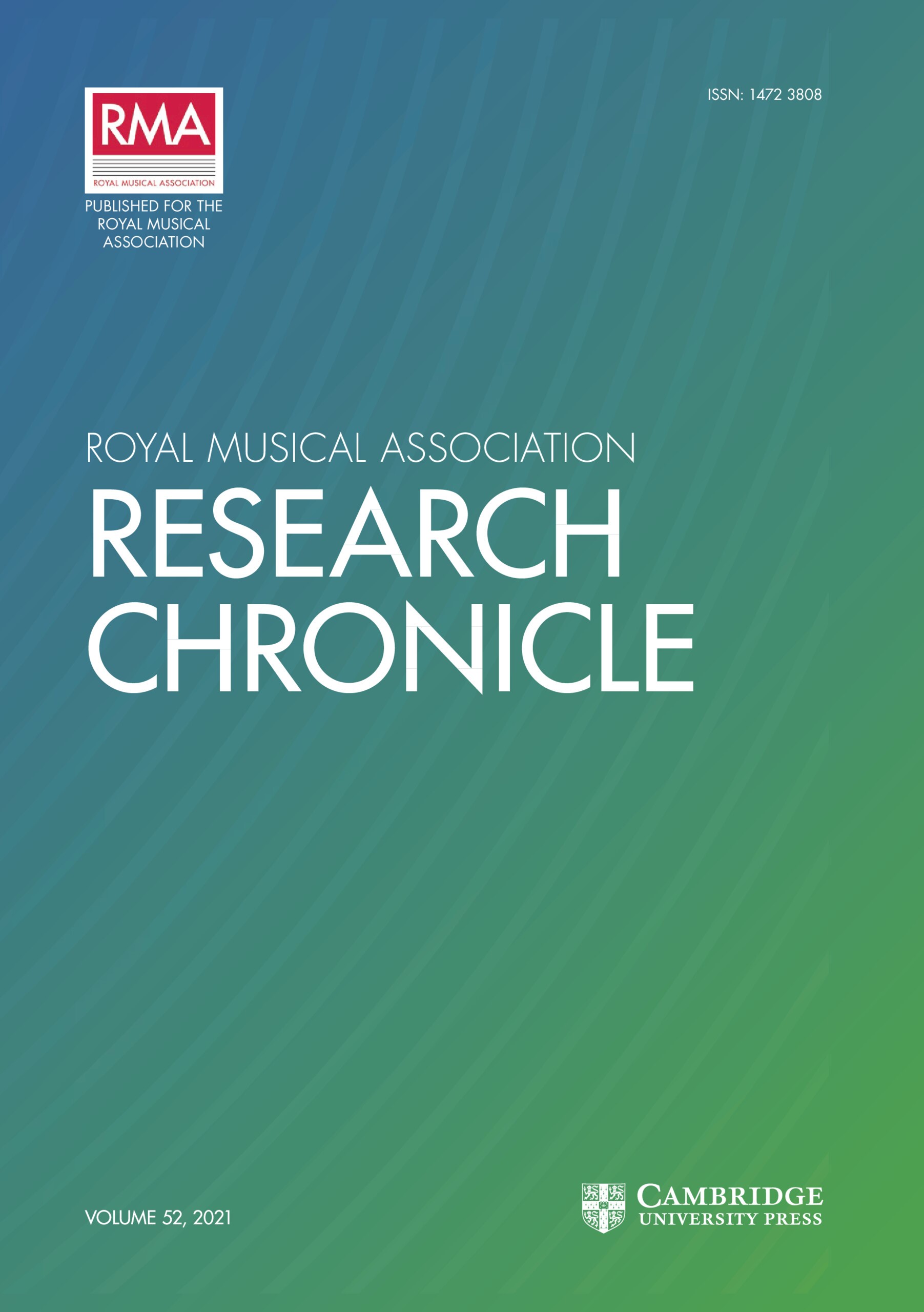No CrossRef data available.
Article contents
Two Little-Known Music Manuscripts in Augsburg with Works by Giovanni Gabrieli and his Contemporaries
Published online by Cambridge University Press: 01 January 2020
Extract
This article is concerned with two manuscripts in the Staats- und Stadtbibliothek in Augsburg (Tonkunst Schletterer 200a and 219) which until now have been virtually overlooked by other scholars. Clytus Gottwald's catalogue Die Musikhandschriften der Staats- und Stadtbibliothek Augsburg (Wiesbaden, 1974) does not mention them, even though they have been in the library for many decades. They were known to Hans Michael Schletterer, who briefly referred to them in his Katalog der in der Kreis- und Stadtbibliothek, dem staedtischen Archive und der Bibliothek des Historischen Vereins zu Augsburg befindlichen Musikwerke (Berlin, 1878), pp. 59 and 113, hot as one might expect in the section on music manuscripts, but in his catalogue of early music prints. The reason for this is simple: Tonkunst Schletterer 200a is a manuscript shelved with a closely related set of early printed partbooks, while Tonkunst Schletterer 219 is a single volume comprising an early print bound with manuscript music.
- Type
- Articles
- Information
- Copyright
- Copyright © Royal Musical Association, 1990
References
Notes
1 I should like to record my thanks to Dr Finkl and Frau Wienzierl of the Staats- und Stadtbibliothek in Augsburg for their kind assistance during my visits to their library, and for their helpful replies to my written enquiries. In addition, I should like to acknowledge the financial assistance of the Australian Research Council.Google Scholar
2 The seven exceptions are found in a collection of manuscript parts in the Murhardsche und Landesbibliothek der Stadt Kassel, and in an organ book found in Gdansk, Biblioteka Polskiej Akademii Nauk. The manuscript parts in Kassel are copied in part by a number of Giovanni Gabrieli's pupils. In this collection there are three works with a continuo part which were originally printed without such a part in Giovanni Gabrieli's Sacrae symphoniae… (Venice, 1597): ‘Surrexit pastor bonus’ (a10), ‘Canzon in Echo duodecimi toni’ (a10), and ‘Canzon duplicata in Echo duodecimi toni’ (a10) (see 2° Mss. mus. 59R and 62F). The manuscript volume for organ found in Gdansk dates from the first half of the seventeenth century and includes a total of five works from the prints of 1587 and 1597, one of which is also found with a continuo part in the Kassel manuscripts: ‘Quis est iste [qui venit]’ (a10), ‘O magnum mysterium’ (a8), ‘O Domine Jesu Christe’ (a8), ‘Jubilemus [singuli]’ (a8), and ‘Surrexit pastor bonus’ (a10) (see Mus. ms. 4012).Google Scholar
3 A number of the earliest prints which include bass parts for organ are cited in Peter Williams, ‘Continuo', The New Grove, 4, pp. 685–99. Even though Gabrieli's print of 1597 does not have a separate partbook with a ‘basso per I'organo', one of the works in this print is accompanied by a comment which specifies that it is to be played ‘con I'Organo': see the ‘Canzon in Echo Duodecimi Toni Primus Cho. a 10'.Google Scholar
4 Cited in David Bryant, “The Cori Spezzati of St. Mark's: Myth and Reality', Early Musk History 1 (1981), pp. 165–86 (esp. pp. 180–1). Additional details about the organs in St. Mark's and their use by Giovanni Gabrieli may be seen in Eleanor Selfridge Field, ‘Gabrieli and the Organ', The Organ Yearbook 8 (1977), pp. 2–19. Further comments about the use of organs and other instruments in the performance of Gabrieli's music may be seen in Richard Charteris, ed., Giovanni Gabrieli: opera omnia, no. 12 in the series Corpus Mensurabilis Musicae (American Institute of Musicology), volumes 7–12 and new editions of volumes 1–6, forthcoming; and in Richard Charteris, ‘The Performance of Giovanni Gabrieli's Vocal Works: Indications in the Early Sources', Music and Letters 71 (1990), pp. 336–51.Google Scholar
5 The comments by Thomas Coryat in his book Coryats Crudities (London, 1611) are cited in Denis Arnold, Giovanni Gabrieli and the Music of the Venetian High Renaissance (Oxford, 1979), pp. 189–90, and 202–3.Google Scholar
6 In his book Life and Works of Giovanni Gabrieli ([Rome], 1967), Egon Kenton claims that these particular manuscript parts, found in the Murhardsche und Landesbibliothek der Stadt Kassel, were copied by three of Giovanni Gabrieli's pupils: Christoph Cornet, Heinrich Schütz and Christoph Kegell (see p. 530). In private correspondence, Professor Joshua Rifkin has reported to me that Schütz's hand is not to be found among these parts, though the hands of Cornet and Kegell are represented there. Those manuscript copies of works by Giovanni Gabrieli in Kassel which have continuo include: 2° Mss. mus. 51A (1 work), 51B (1 work), 51C (2 works), 51D (1 work), 530 (1 work), 53Z (1 work), 57H (1 work), 57N (1 work), 59C (1 work), 59R (2 works), 62C (1 work), 62E (1 work) and 62F (3 works), and 4° Mss. mus. 147A (1 work) and 147D (2 works).Google Scholar


